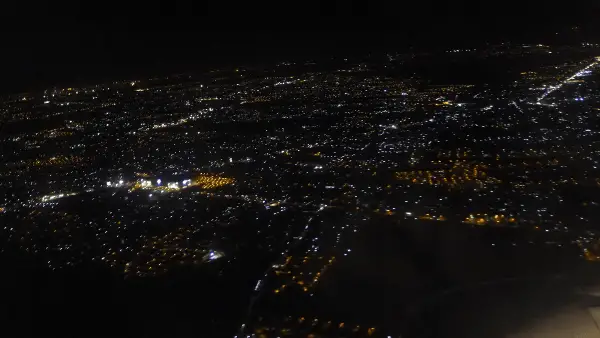The prospects of human population growth may be viewed using two perspectives: the Malthusian and the Cornucopian. The latter views the growth positively; they believe that the larger the population, the better. On the other hand, if it is viewed negatively, this now take on the Malthusian viewpoint where the growth is associated with problems.
The Malthusian Point of View
This principle was named after Thomas Malthus. He believes that once a population increases, more resources are needed to support the growing demand of people. The food becomes insufficient since production could not keep up with the needs of an increased number of people.
Uncontrolled population is a major reason that causes environmental degradation. The theory looked unto resource depletion; degradation of soil, mineral and fuel; famine, crimes, and wars as a result of increased competition in availing of scarce natural resources.
However, the predicted scenarios through time under this theory have some contradictions with the existing population data. Thus, a new thought arose that explains the economic development despite of population growth. Thus, the Cornucopian’s principle started to develop.
Contrary to Malthus’ expectations, the scholars believe that population increase is neither a problem nor harmful to human life. Indeed, it leads to a more developed economy for there is greater number of people who can think and make new inventions.
The Cornucopian’s Principle
The continuous development of technologies from different areas worldwide and the application thereof is the main foundation of this principle. The Cornucopians believe that advances in technologies can give and sustain the needs of the society. The rapid increase in population is positively viewed: more population produces more ideas. Through these, a lot of high technologies and new inventions of systems and devices are carried in to address the problems with increasing human demands as well as improve life. In addition, this view believes that there are enough sources of matter and energy on the earth to cater the rising number of population around the world. So, an increase in food consumption is not an issue.
People become experts and specialized in their fields of interest thus are able to respond efficiently and effectively in the arising problems of society. For instance, advanced technologies in food production helps a lot since more food are produced using new systems.
The Current Reality: Growing Population Affects the Environment Negatively
Many inventions, technologies and new systems are continuously booming. Yes, these help the human beings to cope with the arising human problems. So, the Cornucopians’ thinking has a point.
On the other hand, the Malthusian perspective appears more reliable for we observe that increasing global population lead to increased use of natural resources to meet the growing economic demand. This results to environmental degradation as predicted by Malthus.
We have limited resources. Scarcity on food resources becomes common in many developing countries like Africa and Asia. The report of Food and Agriculture Organization, referred to as the 2013 Global Hunger Index (GHI) from 2008-2012, shows that the global hunger situation has improved since 1990. However, despite the progress made, the level of hunger in the world remains serious in which 870 million people still experience hunger (IFPRI, 2013).

The pollution emitted from production and consumption of natural resources regardless of technological advantages has negative impacts on the ecological aspects of environment especially on the health of human beings. In addition, due to anthropogenic activities, the climatic condition on a global scale is also affected.
Mobility of people affects the ecological condition of the environment. Encroachments of many lands in rural areas for expansion as identified for commercial establishments and different businesses happen. Settlers, then, in these occupied areas move to higher zones or transfer to other places. Environmental degradation, especially in the forested areas, then happens due to the disturbances brought by new settlers (Grimm et al., 2008; Fragkias et al., 2012).
How’s My City?
Population growth is also observed in the City of Puerto Princesa. The total inhabitants of the City in late 1870s was only 573 while the recorded population in year 2010 based on the latest census of the National Statistics Coordinating Board (2010) was 222,673; an increase of 38,760.91% was observed.
During early 1970s to 1990s, the City has 24 urban and 42 rural barangays. However, the classified urban villages around year 1998 until now increased to 35 barangays, while the classified rural regions decreased to 31 barangays.
Since not all families can afford to have their houses in designated areas of the government, some opted to settle in nearby coastal areas that resulted to squatting. Based from the conducted surveys of informal settlers by the city government during 1993 to 2005, there was a total of 5,326 households in 21 coastal areas of the City and 4,999 from various areas.
In order to solve the problem in housing and squatting, the local government launched a City Housing Program in 1993. One of the identified resettlement sites was Barangay Sicsican (CPDO, 2007).
The traffic situation is worsening in urban areas of the City along Rizal Avenue, Malvar Street and within the National Highway of Barangay San Miguel and San Pedro (CPDO, 2007). In year 1985, the Bureau of Land Transportation, Puerto Princesa Branch (1992) registered a total of 2,989 vehicles generally composed of motorcycles and tricycles. There was an increase of about 1,241.39% or 37,105 in year 2012 (40,094 registered vehicles) from year 1992.
Those are just some of the evidences that the Malthusian Theory may be the right after all.
References:
City Planning and Development Office (2007). Socio-economic and physical profile. Puerto Princesa City. Philippines.
Fragkias, M., et al. (2012) Typologies of urbanization projections, effects on land use, biodiversity and ecosystem services. Chapter 7, p. 30-41.
Grimm, N. B., et al. (2008) The changing landscape: ecosystem responses to urbanization and pollution across climatic and societal gradients. 6(5) p. 264–272. Available: www.frontiersinecology.org
International Food Policy Research Institute (2013). Global Hunger Index. The challenge of hunger: building resilience to achieve food and nutrition security. Available: http://www.ifpri.org/sites/default/files/publications/ghi13.pdf. Retrieved on 8 September 2014.
Land Transportation Office-Puerto Princesa City Branch (LTO-PPC)(2012). Number of registered vehicles (2001-2012). Puerto Princesa City. Philippines.


